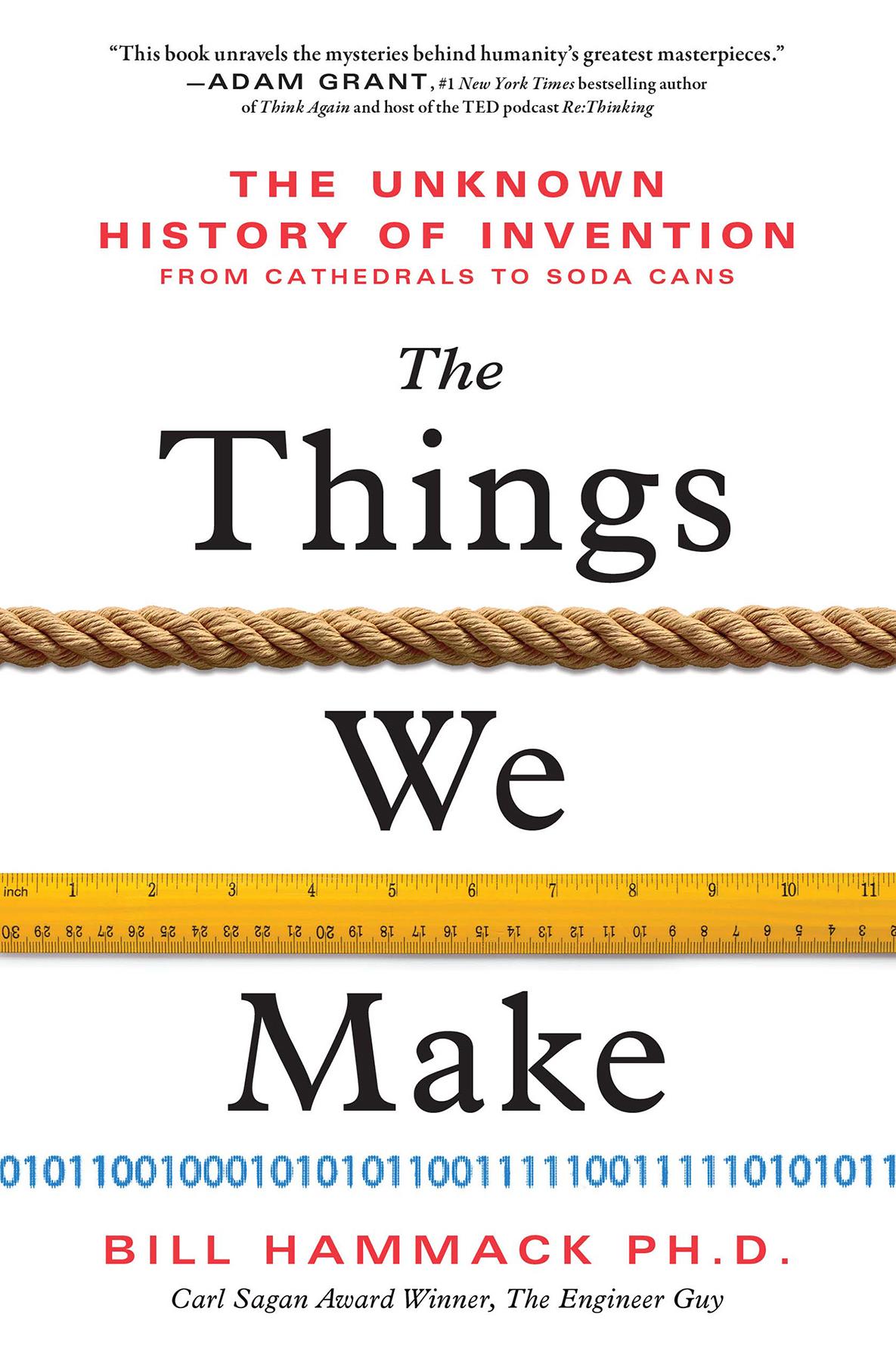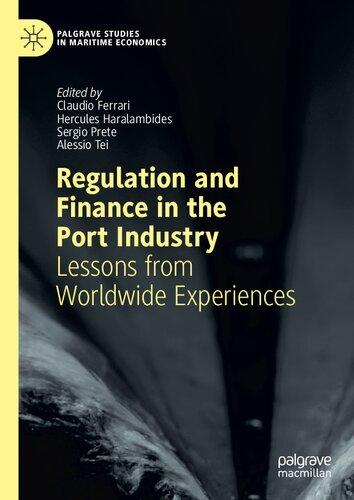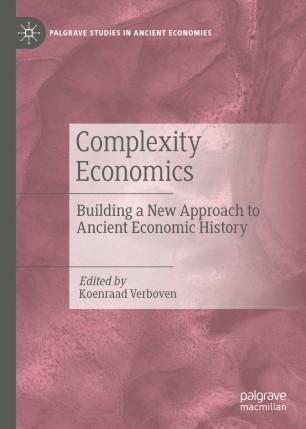The Things We Make: The Unknown History of Invention from Cathedrals to Soda Cans Bill Hammack
https://ebookmass.com/product/the-things-we-make-the-unknown-historyof-invention-from-cathedrals-to-soda-cans-bill-hammack/
ebookmass.com
Regulation and Finance in the Port Industry: Lessons from Worldwide Experiences Claudio Ferrari
https://ebookmass.com/product/regulation-and-finance-in-the-portindustry-lessons-from-worldwide-experiences-claudio-ferrari/
ebookmass.com
Myth, Locality, and Identity in Pindar's Sicilian Odes Virginia Lewis
https://ebookmass.com/product/myth-locality-and-identity-in-pindarssicilian-odes-virginia-lewis/
ebookmass.com
Pathology for the Physical Therapist Assistant 2nd Edition u2013 Ebook PDF Version
https://ebookmass.com/product/pathology-for-the-physical-therapistassistant-2nd-edition-ebook-pdf-version/
ebookmass.com
Complexity Economics: Building a New Approach to Ancient Economic History 1st ed. Edition Koenraad Verboven
https://ebookmass.com/product/complexity-economics-building-a-newapproach-to-ancient-economic-history-1st-ed-edition-koenraad-verboven/
ebookmass.com





Hunter, Regent University; Tobias A. Kroll, Texas Tech University, Health Sciences Center; and Steven Long, Marquette University.
I would also like to express my love and appreciation to my children, Jason, Todd, and Jessica, who are as beautiful as adults as they were as youngsters; to my gran’kids, Cassidy, Dakota, and Zavier, whose language is sprinkled throughout this book; and to my colleague at O and M Education, Moon Byungchoon.
I’m also indebted to the student researchers who helped me analyze over 175 language samples from which much research continues to flow. The now-SLPs and audiologists are Katherine Allen, Lynda Feenaughty, Annie Feldman, Erin Filippini, Marc Johnson, Andrew Kanuck, Jessica Kroecker, Zhaleh Lavasani-Leliberté, Stephanie Loccisano, Katherine Lyle, Jordan Nieto, Catherine Sligar, Kathryn Wind, and Sara Young.
Robert E. Owens, Jr.
Pearson would like to thank the following people for their work on the Global Edition:
Contributor:
Medha Bhattacharyya, Bengal Institute of Technology, Kolkata
Reviewers:
Annesha Dutta, Institute of Engineering and Management, Kolkata
Aditi Ghosh, Calcutta University
Sonia Sahoo, Jadavpur University
This page intentionally left blank
Conclusion 146
Discussion 147
Main Points 147
Reflections 148
6 Language-Learning and Teaching Processes and Young Children 149
Comprehension, Production, and Cognitive Growth 150
Cognition and Language 150 / Less Is More 153
Child Learning Strategies 154
Toddler Language-Learning Strategies 154 / Preschool Language-Learning Strategies 159 / Children’s Processes of Language Acquisition 164
Adult Conversational Teaching Techniques 166
Adult Speech to Toddlers 166 / Adult Conversations with Preschoolers 173
Importance of Play 177
Variations on a Theme 178
Individual Child Differences 178 / Cultural and Social Differences 179
Conclusion 183
Discussion 183
Main Points 184
Reflections 184
7 First Words and Word Combinations in Toddler Talk 185
Single-Word Utterances 189
Pragmatics 190 / Initial Lexicons 196 / Meaning of Single-Word Utterances 201
Early Multiword Combinations 205
Transition: Early Word Combinations 206 / Multiword Utterances 207
Phonological Learning 210
Auditory Maps 210 / Articulatory Maps 211 / Single-Word Utterance
Patterns 212 / Phonological Processes 213 / Learning Units and Extension 215
Individual Differences 215
Bilingualism 216
Conclusion 220
Discussion 220
Main Points 221
Reflections 221
8 Preschool Pragmatic and Semantic Development 222
Preschool Development 223
Pragmatic Development 224
The Conversational Context 227 / Narratives 238 / Theory of Mind 243 / Summary 247
Semantic Development 247
Relational Terms 250 / Conclusion 254
Semantic and Pragmatic Influence on Syntactic Development 255 Semantics 255 / Pragmatics and Its Role in Syntactic Development 256
Language Development Differences and Delays 256
Language Development Differences 256 / Language Development Delays 260
Conclusion 261
Discussion 261
Main Points 262
Reflections 262
9
Preschool Development of Language Form 263
The Semantic–Syntactic Connection 264
Syntactic and Morphologic Development 265 Language Input 266
Patterns in Preschool Language Development 267
Bound Morphemes 267
Progressive -ing 269 / Regular Plural -s 270 / Possessive -’s or -s’ 270 / Regular Past -ed 270 / Regular Third Person Singular -s 271 / Noun and Adjective Suffixes 272 / Determinants of Acquisition Order 273
Phrase Development 275
Noun Phrase Development 275 / Verb Phrase Development 277 / Prepositional Phrase Development 281 / Infinitive Phrase Development 282 / Gerund Phrase Development 283
Sentence Development 283
Declarative-Sentence Form 283 / Interrogative-Sentence Form 286 / Imperative-Sentence Form 290 / Negative-Sentence Form 291 / Subordinate Clause Development 292 / Compound Sentence Development 295 / Summary 297
Phonemic and Phonologic Development 299
Speech-Sound Acquisition 299 / Phonologic Processes 302
Dialectal Difference 306
Conclusion 307
Discussion 307
Main Points 308
Reflections 308
10 Early School-Age Language Development 309
The Early School-Age Child 311
Pragmatic Development 313
Narratives 313 / Conversational Abilities 320 / Summary 324
Semantic Development 324
Vocabulary Growth 324 / Conceptual Change 326 / Related Cognitive Processing 327 / Figurative Language 328
Syntactic and Morphologic Development 330
Morphologic Development 332 / Noun- and Verb-Phrase Development 333 / Sentence Types 336 / Summary 341
Phonologic Development 341
Morphophonemic Development 341 / Speech Production 342 / Summary 343
Metalinguistic Abilities 343
Language Difference 344
Code Switching Development 345 / African American English Speakers and Society 346
Conclusion 347
Discussion 347
Main Points 348
Reflections 348
11 School-Age Literacy Development 349
The Process of Reading 350
Phonological Awareness 351 / Comprehension 352
Reading Development 356
Emerging Reading 356 / Mature Reading 361
The Process of Writing 361
Orthographic Knowledge 362 / Spelling 363
Writing Development 363
Emerging Writing 363 / Mature Writing 364 / Development of Orthographic Knowledge 364 / Spelling Development 365 / Text Generation and Executive Function 367
Conclusion 369
Discussion 369
Main Points 370
Reflections 370
12 Adolescent and Adult Language 371
Pragmatics 373
Narratives 373 / Speaking Styles 374 / Conversational Abilities 375 / Gender Differences 376

It’s important to understand the significance of language for humans. Watch the first 2:08 minutes of this video for an interesting introduction. http:// www.youtube .com/watch?v= PZatrvNDOiE
Language and its processing in your brain are so complex that specialists devote their lives to investigating them. These specialists, called linguists, try to determine the ways in which we use language to communicate. The linguist deduces rules and patterns demonstrated when we, as users of a language, communicate with one another. In a sense, each child is a linguist who must deduce the rules of his or her native language. You’re already a mature language user but let’s imagine that you encounter human language for the first time. Even if you had the most sophisticated computer-based codebreaking software, it would be impossible to figure out the many ways in which humans use language. For that task, you would need to decipher each of the 6,000 human languages and gain extensive knowledge of human interactions, emotions, and cultures. In other words, language is more than the sum of these parts. To understand language, we must consider it in the natural contexts in which it occurs.
Language is the premier achievement of humans, and using it is something that all of us can do. For example, the average adult English speaker produces about 150 words per minute, selecting each from between 30,000 and 60,000 alternatives stored in the user’s brain, choosing from a myriad of English language grammatical structures, and making less than 0.1% errors! That’s impressive!
This becomes all the more amazing when you realize that the typical 4-year-old child has deciphered much of American English and already has well-developed speech, language, and communication skills. Truly remarkable given the complexity of the task! You probably don’t recall much about your own language acquisition. One statement is probably true: Unless you experienced difficulty, there was no formal instruction. Congratulations, you did most of it on your own. Now, we’re going to attempt something almost as momentous . . . trying to explain it all!
To appreciate the task involved in language learning, you need to be familiar with some of the terminology that is commonly used in the field. All the terms introduced in this chapter and throughout the text are summarized for you in the Glossary. The remainder of this chapter is devoted to an explanation of these terms. First, we discuss this text in general. Then we distinguish three often confused terms—speech, language, and communication—and look at some special qualities of language itself. Finally, we’ll examine dialects.
This Text and You
Although the full title of this text is Language Development: An Introduction, it is not a watered-down or cursory treatment of the topic. I have attempted to cover every timely, relevant, and important aspect of language development that might be of interest to the future speech-language pathologist, educator, psychologist, child development specialist, or parent. Of necessity, the material is complex and specific.
No doubt you’ve at least thumbed through this book. It may look overwhelming. It’s not. I tell my own students that things are never as bleak as they seem at the beginning of the semester. Within the last 36 years, I have taken more than 5,000 of my own students through this same material with a nearly 100% success rate. Let me try to help you find this material as rewarding to learn as it is to teach.
First, the text is organized into two sections. The first few chapters provide a background that includes terms, theories, and information on the brain and language. I know it’s difficult to have to read this material when you really want to get to the development part, but believe me, all this background is necessary. The main topics of development are contained in the remaining chapters, which are organized sequentially from newborns through adults. Yes, adults are still learning language and adapting to changes.

What is language and what is not?
Watch minutes 4:05–11:50 in this video as Dr. Steven Pinker of Harvard University answers this question. http:// www.youtube .com/watch?v=QB_ONJIEcE
koala is already gone. Of the 154 Native American languages now in use, nearly 120 are each spoken by less than a thousand individuals. Other endangered languages include OroWin, an Amazonian language with only three surviving speakers; Gullah, spoken by the descendents of African slaves on islands off the coast of South Carolina and Georgia; and Nushu, a southern Chinese language spoken only by women. The worldwide loss of languages is the result of government policy, dwindling indigenous populations, the movements of populations to cities, mass media, and lack of education of the young. The Internet is also a culprit in the demise of some languages. The need to converse in one language is fostering increasing use of English.
Each language is a unique vehicle for thought. For example, in many Native American languages, the Great Spirit is not a noun as in European languages but a verb. This concept of a supreme being is totally different from that of Europeans. As a speaker of English, can you even imagine god as a verb? It changes the whole concept of a supreme being.
In the rain forest of northwestern Brazil, a language called Pirahã is so unique that it almost defies accepted notions of language. Spoken by approximately 350 people and reflecting their culture, Pirahã consists of only eight consonants and three vowels. Yet it has such a complex array of tones, stresses, and syllable lengths that speakers dispense with their sounds altogether and hum, sing, or whistle using relatively simple grammar by linguistic standards. Instead, meaning of words and phrases depends on changes in pitch and tone.
When we lose a language, we lose an essential part of the human fabric with its own unique perspective. A culture and possibly thousands of years of communication die with that language, the study of which might have unlocked secrets about universal language features, the origins of language, or the nature of thought. Within oralonly languages, the very nature of language itself is different. Words that have been passed on for generations acquire a sacredness, and speech is somehow connected to the Divine.
The death of a language is more than an intellectual or academic curiosity. After a week’s immersion in Seneca, Mohawk, Onondaga, and other Iroquois languages, one man concluded:
These languages are the music that breathes life into our dances, the overflowing vessels that hold our culture and traditions. And most important, these languages are the conduits that carry our prayers to the Creator. . . . Our languages are central to who we are as a native people.
“Come visit sometime,” he offers. “I will bid you ‘oolihelisdi’ ” (Coulson, 1999, p. 8A). English is a Germanic variation of a much larger family of Indo-European languages as varied as Italian, Greek, Russian, Hindi, Urdu, Persian, and ancient Sanskrit. Although the Indo-European family is the largest family, as many as 30 others may exist, many much smaller.
Languages can grow as their respective cultures change. English has proven particularly adaptive, changing slowly through the addition of new words. According to the Oxford English Dictionary, approximately 8,000 English words predate the 12th century, including laugh and friend. Already the language with the largest number of words—approximately 700,000— English adds an estimated half dozen words per day. While many of these are scientific terms, they also include words popular on college campuses, such as selfie (smartphone self-photo), cholo (macho), and dis (scorn). English dictionaries have just recently added 24/7, bubba, blog, headbanger, gaydar, pumped (up), megaplex, racial profiling, slamming, brownfield, piercing, homeschool, netiquette, and sexting. Some words have new meaning. For example, previously only Moses had tablets, now everybody does. These words tell us much about our modern world.
FIGURE 1.1 Symbol–Referent Relationship
The concept is formed from the common elements of past experiences. The common elements of these experiences form the core of the concept. When a referent is experienced, it is interpreted in terms of the concept and the appropriate symbol applied.
Past EXPERIENCES
(memories from interactions with priests)
Common ELEMENTS (male, clergy, clerical collar)
Referent in CONTEXT (present experience)
Concept
Long-Ter m MEMORY
Symbol (“Father”)
that your biological father is an Episcopal minister. You see him on the street in clerical garb and say, “Good morning, Father.” A passerby, unaware of your relationship, will assume something very different from the meaning that you and your father share. Coding is a factor of the speaker’s and listener’s shared meanings, the linguistic skills of each, and the context in which the exchange takes place.
Individual linguistic units communicate little in isolation. Most of the meaning or information is contained in the way symbols are combined. For example, “Teacher Jim a is” seems a meaningless jumble of words. By shifting a few words, however, we can create “Jim is a teacher.” Another modification could produce “Is Jim a teacher?”—a very different sentence. Language rules specify a system of relationships among the parts. The rules for these relationships give language order and allow users to predict which units or symbols will be used. In addition, the rules permit language to be used creatively. Symbols and rules governing their use help us to create utterances. Language should not be seen merely as a set of static rules. It is a process of use and modification within the context of communication. Language is a tool for social use.
COMMUNICATION
Both speech and language are parts of a larger process called communication. Communication is the exchange of information and ideas, needs and desires, between two or more individuals. The process is an active one that involves encoding, transmitting, and decoding the intended message. Figure 1.2 illustrates this process. It requires a sender and a receiver, and each must be alert to the informational needs of the other to ensure that messages are conveyed effectively and that intended meanings are preserved. For example, a speaker must identify a specific female, such as “Have you seen Catalina?” prior to using the pronoun she, as in “She was supposed to meet me.” The probability of message distortion is very high, given the number of ways a message can be formed and the past experiences and perceptions of each participant. The degree to which a speaker is successful in communicating, measured by the appropriateness and effectiveness of the message, is called communicative competence. The competent communicator is
Paralinguistic mechanisms are called suprasegmental devices because they can change the form and meaning of a sentence by acting across elements, or segments, of a sentence. As mentioned, a rising pitch can change a statement into a question without altering the arrangement of words. Similarly, “I did my homework” and “I did my homework” convey different emotions.
Nonlinguistic Cues
Gestures, body posture, facial expression, eye contact, head and body movement, and physical distance or proxemics convey information without the use of language and are called nonlinguistic cues. The effectiveness of these devices varies with users and between users. We all know someone who seems to gesture too much or to stand too close while communicating. Some nonlinguistic messages, such as a wink, a grimace, a pout, or folded arms, can convey the entire message.
As with language, nonlinguistic cues vary with the culture. Perfectly acceptable gestures in one culture may be considered offensive in another. Table 1.1 presents a list
TABLE 1.1 Nonlinguistic Cues
Thumbs-up
A-OK
Victory or peace sign
Hailing a waiter (one finger raised)
Beckoning curled finger
Tapping forehead to signify “smart”
Japan: money
France: zero, worthless
Australia, Nigeria, Islamic countries, such as Bangladesh
Latin American countries
England (if palm toward body)
Germany: two Japan
Yugoslavia, Malaysia, Indonesia, Australia
Netherlands: crazy Stop
Hands in the pockets
Strong handshake
Good-bye
Crossing legs and exposing sole of the foot
Middle East: aggression
Europe and Latin America: no
Nodding head for agreement Greece, Yugoslavia, Turkey, Iran, Bengal: No
Source: Information from Axtell (1991).
Greece, West Africa
Belgium, Indonesia, France, Finland, Japan, Sweden
Southeast Asia
Language includes not only the rules but also the process of rule usage and the resulting product. For example, a sentence is made up of a noun plus a verb, but that rule tells us nothing about the process by which you select the noun and verb or the seemingly infinite number of possible combinations using these two categories.
A language user’s underlying knowledge about the system of rules is called his or her linguistic competence. Even though the user can’t state many of the rules, performance demonstrates adherence to them. The linguist observes human behavior in an attempt to determine these rules or operating principles.
If you have ever listened to an excited speaker or a heated argument, you know that speakers do not always observe the linguistic rules. In fact, much of what we, as mature speakers, say is ungrammatical. Imagine that you have just returned from the New Year’s celebration at Times Square. You might say the following:
Oh, wow, you should have . . . you wouldn’t be-believe all the . . . never seen so many people. We were almost . . . ah, trampled. And when the ball came down . . . fell, all the . . . Talk about yelling . . . so much noise. We made a, the mistake of . . . can you imagine anything as dumb as . . . well, it was crazy to drive.
It’s ungrammatical but still understandable. So is much of what we say.
Linguistic knowledge in actual usage is called linguistic performance. A user’s linguistic competence must be deduced from his or her linguistic performance, such as that of our New Year’s reveler. You cannot measure linguistic competence directly.
There are many reasons for the discrepancy between competence and performance in normal language users. Some constraints are long-term, such as ethnic background, socioeconomic status, and region of the country. These account for dialects and regionalisms. We are all speakers of some dialectal variation, but most of us are still competent in the standard or ideal dialect. Dialectal speakers do not have a language disorder, just a different way of saying things.
Even though much that is said is ungrammatical, native speakers have relatively little difficulty decoding messages. If a native speaker knows the words being used, he or she can apply the rules in order to understand almost any sentence encountered. In actual communication, comprehension is influenced by the intent of the speaker, the context, the available shared meanings, and the linguistic complexity of the utterance. A sentence such as “Chairs sourly young up swam” is ungrammatical. It violates the rules for word order. Native speakers notice that the words do not fall into predictable patterns. When rearranged, the sentence reads “Young chairs swam sourly up.” This is now grammatical in terms of word order but meaningless; it doesn’t make sense. Other rules allow language users to separate sense from nonsense and to determine the underlying meaning. Although “Dog bites man” and “Man bites dog” are very similar in that each uses the same words, the meanings of the two sentences are very different. Only one will make a newspaper headline. Likewise, a single sentence may have two meanings. For example, the sentence “The shooting of the hunters was terrible” can be taken two ways: either they shot poorly or someone shot them. Language users must know several sets of rules to make sense of what they hear or read.
Learning the Rules
Children learn language rules by actually using them to encode and decode. The rules learned in school are the “finishing touches.” For example, a preschool child demonstrates by using words that he or she knows what a noun is long before he or she can define the term or even name it.
On one family trip, we passed the time with a word game. My 5-year-old daughter was asked to provide a noun. Immediately, she inquired, “What’s that?” In my best
Speakers use these components to achieve certain communication ends, such as gaining information, greeting, or responding (pragmatics). Let’s examine the five components of language in more detail.
SYNTAX
The form or structure of a sentence is governed by the rules of syntax. These rules specify word, phrase, and clause order; sentence organization; and the relationships among words, word classes, and other sentence elements. Syntax specifies which word combinations are acceptable, or grammatical, and which are not. For example, the syntax of English explains why “Maddi has thrown the ball” is a possible sentence, while “Maddi the ball has thrown” sounds awkward.
Sentences are organized according to their overall function; declaratives, for example, make statements, and interrogatives form questions. The main elements of a sentence are noun and verb phrases, each composed of various word classes (such as nouns, verbs, adjectives, and the like).
Each sentence must contain a noun phrase and a verb phrase. The mandatory features of noun and verb phrases are a noun and a verb, respectively. The short biblical verse “Jesus wept” is a perfectly acceptable English sentence: It contains both a noun phrase and a verb phrase. The following, however, is not a complete sentence, even though it is much longer:
The grandiose plan for the community’s economic revival based on political cooperation of the inner city and the more affluent suburban areas
This example contains no verb and thus no verb phrase; therefore, it does not qualify as a sentence.
Within noun and verb phrases, certain word classes combine in predictable patterns. For example, articles such as a, an, and the appear before nouns, and adverbs such as slowly modify verbs. Some words may function in more than one word class. For example, the word dance may be a noun or a verb. Yet there is no confusion between the following sentences:
The dance was attended by nearly all the students. The children will dance to earn money for charity.
The linguistic context of each sentence clarifies any confusion.
Syntax can be conceptualized as a tree diagram (Figure 1.5). Each noun phrase or verb phrase included in a sentence contains various word classes. In a given phrase, word classes may be deleted or added. As long as the noun and verb remain, a sentence is possible. This hierarchical structure permits boundless elaboration within the confines of the syntactic rules. Obviously, the tree diagram in Figure 1.5 has only limited use. Flexible use of language would require hundreds, if not thousands, of other possible diagrams. Children don’t memorize diagrams; rather they learn rules for ways of constructing them.
As language users, we sometimes get into difficulty when we must follow prescribed language rules. This usually occurs in writing. Spoken language is much more informal than written language and less constrained. In the 19th century, formal grammar guides were written, often prescribing rules used by the upper class. As a result, today we are saddled with the distinction in formal writing between who and whom, the incorrectness of using since to mean because, the inadmissibility of the split infinitive (to finish quickly is fine, but not to quickly finish), and the don’t-end-a-sentence-with-a-preposition rule.
